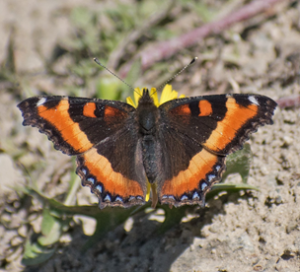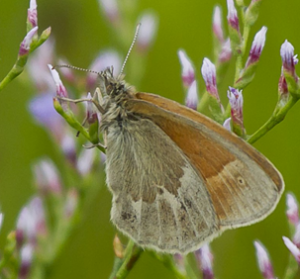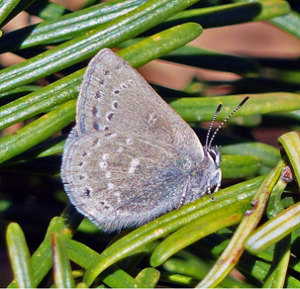Climate Generalist Butterflies Expected to be Winners Under Climate Change in Canada
by Olivia Cornies
(ocornies@sfu.ca)
Forecasting species responses to climate change is integral to the development of adaptive and practical conservation decisions. Butterflies are climate-constrained in at least two ways, as ectotherms, the climate has a defining role in dictating where butterflies can live. Additionally, a warming climate may have huge impacts on their host plant availability. These constraints could mean certain butterfly species may have to move north, or up in elevation, to stay within their preferred temperature range. Predicting how butterflies might respond to such temperature and host plant shifts could inform decisions involving conservation prioritization, species management, and natural resource management.
We used data on where 288 non-migratory Canadian butterfly species have been collected, as well as observation data from eButterfly, and corresponding climate data from these places to calculate a “niche width” measurement for each species. We predict that species with wide niche widths (those collected in both warm and cold places) might be more robust to climate change effects since they can potentially adjust to a higher degree of warming. We also predict that species with narrow niche widths (those collected in either just cold or just warm places) might be forced to relocate or adapt as temperatures change, and if they are unable to do that, will be at higher risk of extinction. More precisely, we measured the temperature ranges for each species, using the minimum temperature of the coldest month and the maximum temperature of the warmest month where each species was found. Within the top species with the widest climatic niches (climate “generalists”) most species had larger wingspans (their mean wingspan being above 3.5 cm). For the bottom species with the narrowest niche widths (climate “specialists”), most had smaller wingspans compared to those with wide niches (with a mean wingspan below 3.5 cm).

By dividing a map of Canada into plots, it is possible to see how butterflies have shifted ranges over time. Some species have colonized new plots over the past century (“gains”), whereas others have dropped out of plots (“losses”). Climate generalist species gained an average of 12.1 plots and lost an average of 12.5 plots. Meanwhile, climate specialist species gained an average of 1.9 plots and lost an average of 2.0. There is quite a stark difference between these two groups. It is possible that climate generalists have greater adaptability to new regions, and their presence throughout Canada appears to be more dynamic than those with narrow niche widths.

These smaller wingspan climate specialist species may be especially vulnerable to temperature fluctuations. This is because their body size could make it more difficult for them to migrate to new areas, as flying takes a lot of energy and smaller wings cannot carry them as far. A noteworthy species in this narrow niche width, small wingspan category is Satyrium semiluna, commonly referred to as the Half-moon Hairstreak. This native species inhabit a very specific sagebrush/grassland niche, has a very narrow climate niche width, and is classified as endangered (COSEWIC, 2006). The species with the narrowest niche width in Canada is the Maritime Ringlet Coenonympha nipisiquit, which is also endangered. This species inhabits salt marshes, and unfortunately is facing threats from many angles. Both the Half-moon Hairstreak and the Maritime Ringlet have very limited ranges in North America, and next to no grid cell gains and losses. In contrast, the species with the widest niche width is Milbert’s Tortoiseshell Aglais milberti, and its status is not of concern in Canada. This species is the only species of this genus in all North America, and it is also quite dynamic, having gained 30 grid cells, and lost 24. It seems that the wide niche width of Milbert’s Tortoiseshell contributes to its ability to dynamically occupy different areas in Canada, as opposed to the limited mobility and limited niche widths of both the Half-moon Hairstreak and the Maritime Ringlet.

While niche width is only one aspect to consider when studying how a species might respond to climate change, using such niche width measurements to predict the fates of species might assist in proactive rather than reactive, management approaches. As we continue to improve our climate models, it is becoming possible to predict temperature changes across the globe with surprising precision. Tracking how the climate will change for the specific locations in Canada that the climate specialist species occupy may be one way to provide early insight for prioritization of conservation initiatives, such as captive breeding or granting legal protection.